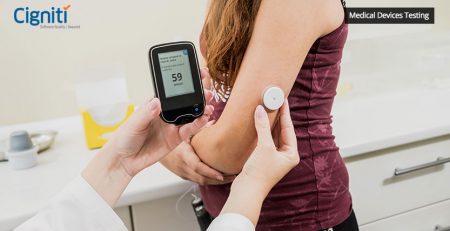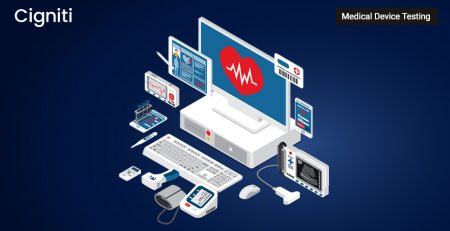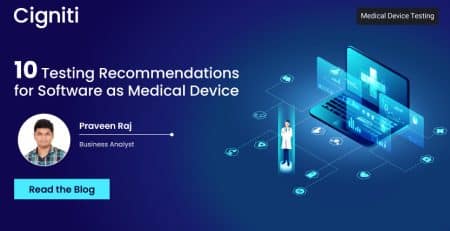Preventing Medical Device Recalls: The Vital Role of SIL, HIL, and Hybrid Loop Testing
|
Listen on the go!
|
The medical device industry has recently seen a troubling increase in recalls, often due to software failures or software-to-hardware miscommunication. The number of medical devices with software is also increasing, considering the rise in IoMT (Internet of Medical Things). These issues highlight the urgent need for thorough and robust testing methodologies to ensure the reliability and safety of medical devices. Among the essential testing strategies are Software in the Loop (SIL), Hardware in the Loop (HIL), and Hybrid Loop Testing. Each method offers unique benefits and, when used together, forms a comprehensive framework for validating medical devices.
Software in the Loop (SIL) Testing: The First Line of Defense
SIL testing is a crucial early-stage method focused on validating software components within a simulated environment. This type of testing allows developers to identify and fix software bugs, verify algorithms, and ensure that the software meets design specifications without requiring physical hardware.
Key Benefits of SIL Testing
- Early Bug Detection: This method identifies software issues early in development, reducing the risk of costly fixes later.
- Cost-Effective: Eliminates the need for hardware, making it a cheaper and faster testing method.
- Focused Validation: Ensures that software logic and algorithms function correctly in isolation.
In medical devices, SIL testing helps refine control algorithms for devices like insulin pumps and ensures the accuracy of diagnostic software used in imaging systems.
Hardware in the Loop (HIL) Testing: Bridging Software and Hardware
After SIL testing, ensuring that software interacts correctly with actual hardware components is essential. HIL testing integrates the software with real hardware to validate their interaction in a controlled environment.
Key Benefits of HIL Testing
- Realistic Testing Environment: Provides realistic interaction between software and hardware.
- Hardware Interaction Validation: Ensures correct interface and communication between software and hardware components.
- Regulatory Compliance: Meets stringent regulatory standards requiring extensive integrated system testing.
HIL testing is vital for medical devices to ensure that patient monitoring systems accurately process and respond to real-time data from sensors or that therapeutic devices like pacemakers function correctly under various conditions.
Hybrid Loop Testing: The Comprehensive Approach
Hybrid loop testing combines the strengths of both SIL and HIL testing. It integrates simulated components with real hardware, offering a flexible and comprehensive validation of the entire system.
Key Benefits of Hybrid Loop Testing
- Comprehensive Validation: Tests the integrated system’s performance by combining real and simulated components.
- Flexibility: Allows testing scenarios that are too costly or impractical to replicate entirely with hardware.
- Enhanced Debugging: Simultaneously identifies and addresses both software and hardware issues.
- In medical devices, hybrid loop testing is particularly beneficial for complex systems where some parts can be effectively simulated while others require real hardware for accurate validation. This approach ensures that the overall system operates reliably in real-world scenarios.
Why All Three Testing Methods Are Essential
The recent spike in medical device recalls highlights the dangers of inadequate testing. Software failures and software-to-hardware miscommunication can have severe consequences, including compromised patient safety. These issues can lead to device malfunctions, delays in treatment, and even life-threatening situations for patients. Comprehensive testing is, therefore, indispensable for mitigating these risks and ensuring that medical devices perform reliably under all conditions.
Integrated Testing Approach
Using SIL, HIL, and hybrid loop testing in a complementary manner ensures that all aspects of the system are thoroughly tested. Here’s how they can be integrated into the development process:
Start with SIL Testing:
- Focus on validating and debugging the software logic and algorithms.
- Perform extensive testing of software components and their interactions in a simulated environment.
Proceed to HIL Testing:
- Validate the software’s interaction with actual hardware components.
- Test hardware-specific functionalities and ensure compliance with real-world performance requirements.
Implement Hybrid Loop Testing:
- Combine simulated and real hardware components to test the integrated system.
- Validate complex interactions and ensure the overall system’s reliability and safety.
Developers can ensure a robust validation process by employing all three methods, leading to high-quality and reliable medical devices. Each testing method addresses different aspects of the system, providing a comprehensive approach to ensuring safety, effectiveness, and regulatory compliance. This comprehensive approach meets regulatory standards, and fosters trust and confidence in the medical device industry.
Conclusion
In the ever-evolving landscape of medical device technology, rigorous testing is paramount. SIL, HIL, and hybrid loop testing each play a vital role in developing and validating medical devices. By integrating these methodologies, developers can create robust, reliable, and safe medical devices, ultimately improving patient outcomes and reducing the risk of costly recalls. As the industry continues to innovate, embracing these testing strategies will be key to maintaining the highest quality and safety standards.
Cigniti has already demonstrated its expertise in HIL, SIL, and hybrid loop testing for several medical device clients, including a leading insulin pump manufacturer, showcasing the effectiveness of this comprehensive approach. By leveraging its advanced testing capabilities, Cigniti has helped ensure the reliability and safety of critical medical devices, setting a benchmark for the industry.
Need help? Contact our medical device testing experts to learn more about preventing medical device recalls and the vital role of SIL, HIL, and Hybrid Loop Testing.





Leave a Reply